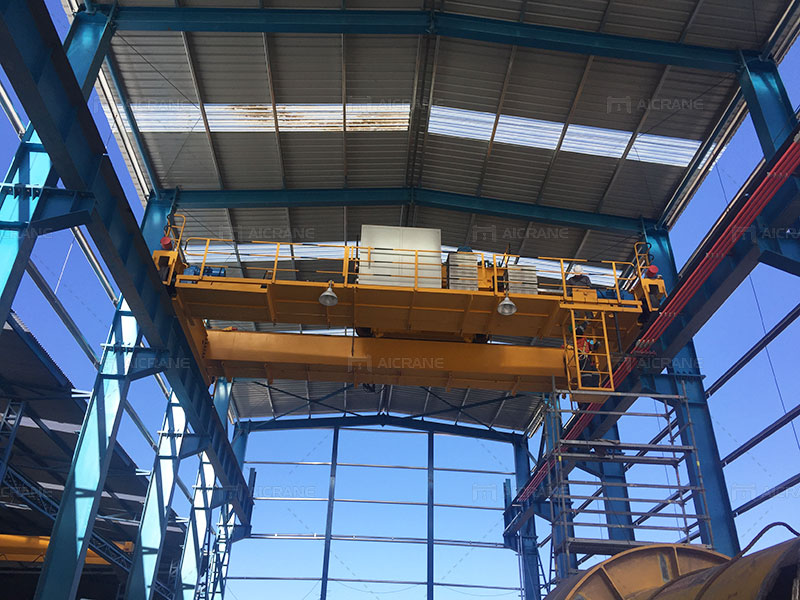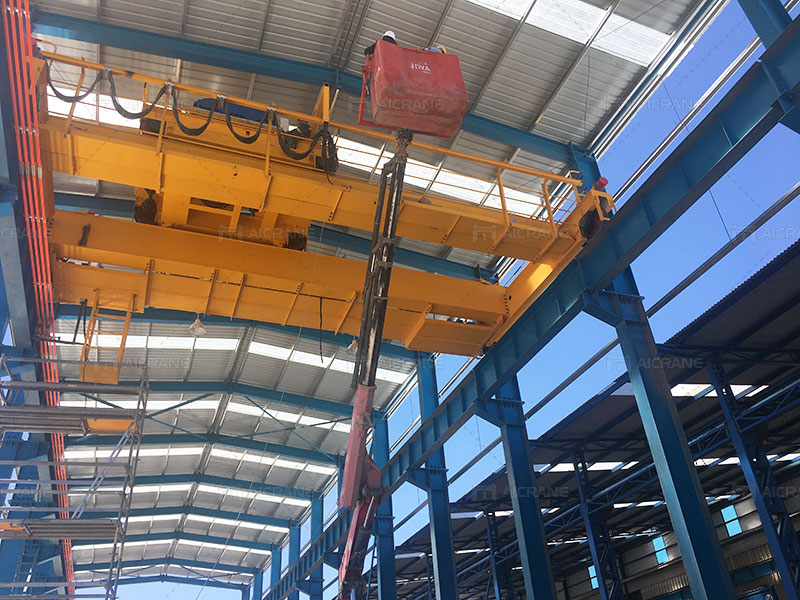An overhead crane is a vital piece of equipment used in various industries for lifting and transporting heavy loads. Among the different types of overhead cranes, the double girder overhead crane stands out as a reliable and efficient solution for heavy-duty applications. Installing a double girder overhead crane requires careful planning, preparation, and execution to ensure safety and optimal performance. In this article, we will outline the installation procedure for a double girder overhead travelling crane.

Planning and Design
Before starting the installation process, thorough planning and design are essential. This includes evaluating the specific requirements of the facility, such as the maximum load capacity, span length, and lifting height. It is crucial to consider factors like building structure, electrical requirements, and any potential obstructions that could affect the crane’s operation. Additionally, adherence to local regulations and safety standards should be a priority during the planning phase.
Foundation and Runway Construction
A solid and well-constructed foundation is critical for the safe operation of a double girder overhead crane. The foundation should be designed to withstand the load imposed by the overhead crane equipment, including the weight of the bridge, hoist, and the maximum load capacity. The foundation must also provide stability and minimize any vibrations during crane operation.
Simultaneously, the runway beams need to be installed securely to support the crane’s movement. The runway beams should be aligned accurately and level to ensure smooth and safe crane travel. Adequate clearances should be maintained between the crane and any adjacent structures or obstacles.
Crane Assembly
The assembly process involves erecting the main components of the double girder overhead crane, including the bridge girders, end trucks, hoist trolley, and electrical components. A team of experienced technicians should handle the crane assembly to ensure accuracy and efficiency.
First, the bridge girders are lifted and positioned onto the end trucks, which house the wheels for the crane’s lateral movement. The end trucks are then connected to the runway beams, and alignment is verified to ensure proper tracking. Once the bridge is secured, the hoist trolley is installed on the bridge girders, and its movements are tested for smooth operation.

Electrical Installation
The electrical installation involves connecting the power supply, control panels, and various sensors required for the safe operation of the crane. It is crucial to follow electrical codes and guidelines to prevent any electrical hazards.
The power supply must be properly sized and connected to the crane’s control panel. The control panel should be located in a convenient and accessible location for the crane operator. Wiring and cabling should be neatly organized and protected to prevent any damage or interference.
Safety features like limit switches, emergency stop buttons, and overload protection systems should be installed and tested to ensure their proper functioning. The electrical installation should be performed by qualified electricians who are knowledgeable about the specific requirements of heavy duty overhead crane systems.
Testing and Commissioning
Once the crane is fully assembled and the electrical connections are completed, thorough testing and commissioning should be carried out before putting the crane into regular operation. This includes load testing to verify the crane’s performance under maximum load conditions. Functional tests should be conducted for all crane movements, including bridge travel, trolley travel, and hoisting operations.
During the testing phase, any issues or malfunctions should be identified and promptly addressed. Once all tests are successfully completed, the crane can be commissioned for regular operation.
Training and Documentation
Proper training of crane operators and maintenance personnel is crucial for safe and efficient crane operation. The operators should receive comprehensive training on the crane’s controls, safety procedures, and emergency protocols. Maintenance personnel should be familiar with the maintenance requirements and schedules to ensure the crane’s optimal performance.
Accurate documentation, including installation records, electrical diagrams, and operation manuals, should be prepared and maintained for future reference and compliance purposes.
In conclusion, the installation procedure of a double girder overhead crane requires careful planning, diligent execution, and adherence to safety standards. From the initial planning and design phase to the final testing and commissioning, every step should be carried out with precision. By following these guidelines, a well-installed double girder overhead crane will provide efficient lifting solutions and enhance productivity in various industrial applications.
